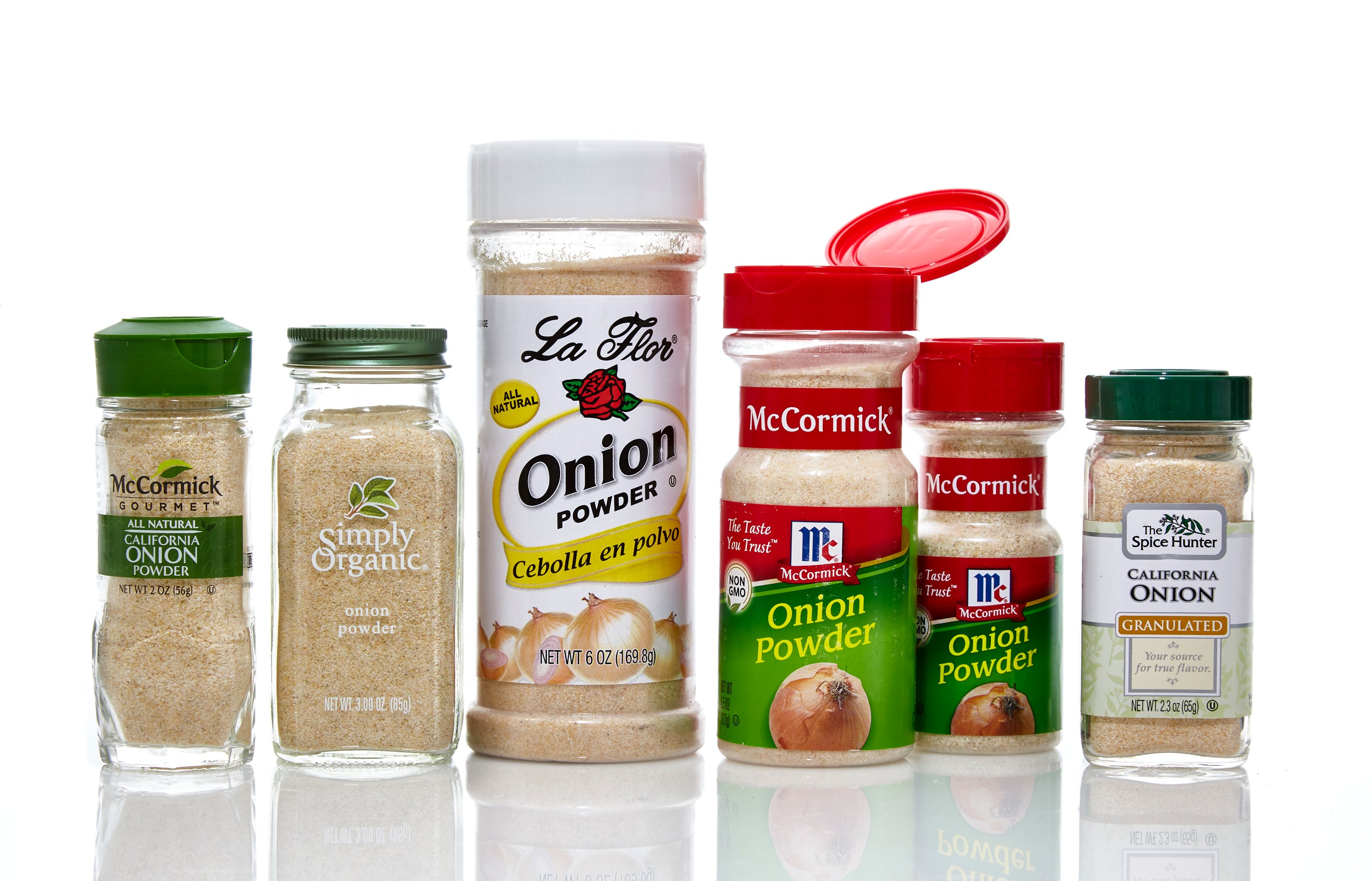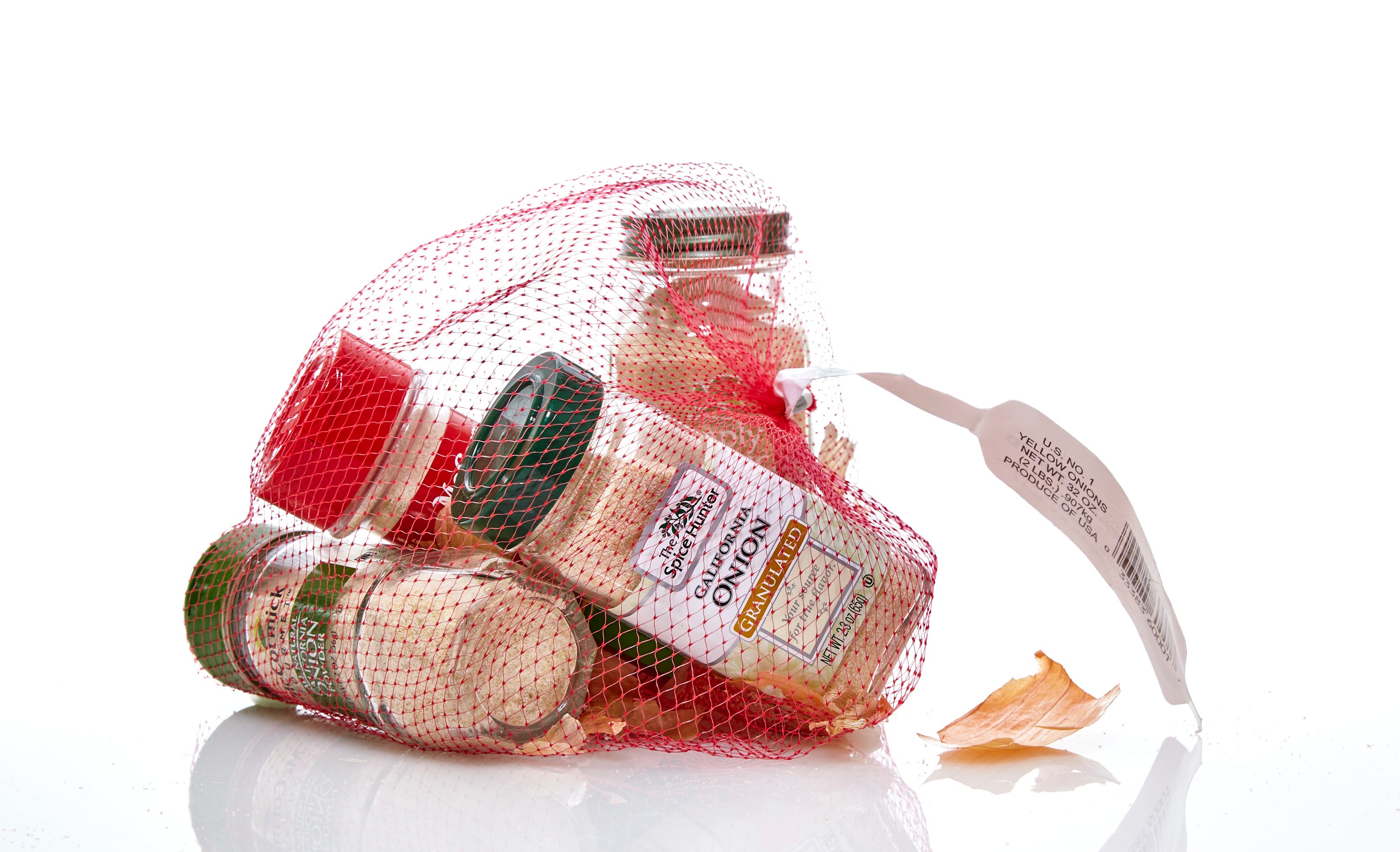
In our post–Omnivore’s Dilemma era, when everyone seems to agree that fresh ingredients are categorically superior to processed ones, onion powder is regarded as unforgivably ersatz. But the thing is, everybody is wrong.
Sometime in the early 2000s, when I was first fine-tuning my home-cooking chops, I decided that I didn’t like onion powder. There was never a moment when I actively said as much to myself. But making my way down the spice aisle, I would stock my basket with dried za’atar, Ceylon cinnamon, and smoked paprika. Onion powder rarely made the cut. There was something about sprinkling the powdered allium into my food that felt wrong, like cheating.
I’m not alone. The food world is enchanted by the exotic and esoteric world of spices, whether it’s the cumin and coriander seeds we buy whole, toast in hot skillets, and then buzz in spice grinders to release their bewitching fragrance, or the blends, like Indian masalas and Japanese togarashi, that we deploy like secret culinary weapons in our food. In the meantime, good old onion powder—which is essentially whole onions that are dried and pulverized—gets overlooked at best and at worst outright dismissed.
Our prejudice has everything to do with this century’s obsession with all things “artisanal” and “natural”—two vaguely defined terms that are widely used to characterize a food’s worth. Never mind that onion powder is essentially a whole food, no different than, say, dried mint or thyme. It has fallen victim to people’s erroneous belief, mine included, that it is somehow subpar to its fresh counterpart.
Part of the confusion stems from ground onion’s frequent inclusion in packaged soup mixes, bouillon powders, and other convenience ingredients that also contain legitimately dubious ingredients, like hydrogenated oils, maltodextrin, and hydrolyzed soy. The onion powder itself isn’t the problem, but it becomes guilty by association.

At an emotional level, shunning onion powder feels like a meaningful rejection of the previous generation’s cooking ethos. Onion powder hasn’t been treated with quite the disdain of, say MSG or corn syrup, but it is part of the same emotional package. And while plenty of home cooks still use it, within the realm of chefs, food writers, and other tastemakers, it is generally regarded as old school—not in an exciting or authentic way, but in a snickering, “Can you believe people used to cook with condensed mushroom soup?” way.
“I associate onion and garlic powder with growing up in the suburbs with little access to or knowledge of anything else,” says food writer Gayle Squires. She’s right. Whole generations of American home cooks relied on onion powder and a very short list of other spices to flavor their cooking. “My mother used four spices—salt, black pepper, paprika for color, and, most predominately, onion or garlic powder—that we used to call ‘Jewish spice mix,’” says Mitchell Davis, executive vice president of the James Beard Foundation and author of the cookbooks Kitchen Sense and The Mensch Chef.
And yet many of the foods in this old-school cooking canon—things like meatballs, roast and fried chicken, barbecue, brisket, and onion dip—are the foods we most passionately crave. We crave them for their deeply savory, umami-packed flavor and for their comforting appeal. It is no coincidence that onion powder routinely shows up on these dishes’ ingredient lists. “Even today, when I use countless pounds of fresh onions in my cooking, I still add onion powder in anything that is meant to taste especially homey,” Davis says.
Making onion powder is a relatively straightforward process. Onions, which begin at approximately 89 percent water by weight, are first dried (either air-dried, dehydrated, or freeze-dried) and then crushed into flakes, cornmeal-textured granules, or a fine, downy powder. Sometimes the onion is toasted first, which mellows its pungency.
Shedding all of that moisture concentrates the onions’ flavor but also requires a large input of fresh bulbs for a relatively small return. “One onion turns into a generous pinch of good powder,” says Raema Rotindo, founder of Rockerbox Spice Co., a Hudson Valley–based company that specializes in small-batch garlic and onion powders.

The United States is the world’s largest producer of onion powder by a significant margin, making over 100,000 tons each year. Some of the powder is bottled for consumer use, with the rest being funneled toward commercial products, like sour cream and onion chips, packaged onion rings, and the aforementioned soup mixes.
As with any spice, sourcing good-quality onion powder is key to getting the best flavor in a finished dish. A bottle of McCormick will do in a pinch, but conventional onion powders tend to incorporate fillers and additives like silica and anti-caking agents. They also include the skins, stems, and roots of the onion, which is simpler than peeling and trimming and increases the overall yield, but muddies the overall flavor.
“When you buy onion powder at the store, there’s usually no indication of what type of onions are in the bottle,” Rotindo adds. “They are typically made with white onions, which are much more aggressive than other types.”
Neither of these practices have helped onion powder’s overall reputation. But it’s worth shopping around because when an onion powder is good, it can be sublime. “With powder, you get the real essence of the bulb,” said Lior Lev Sercarz, a master spice blender and author of The Spice Companion. “It tastes like onion on steroids – more oniony than an actual onion.” Not surprisingly, of the 150 custom spice blends that Sercarz currently offers at La Boîte, nearly one quarter of them use dried ground onion.
“Onion powder adds a sweet and savory flavor to certain dishes that you can’t get from fresh onions. It’s a whole different experience,” says cookbook author Emily Farris. “I go through a jar every month or two.”
These days, so do I. After years of avoidance, on a whim I sprinkled a little onion powder into a frittata—a dish that, despite the sautéed onions, shallots, garlic, and scallions I folded in, never seemed to pack enough oomph. Or at least, it never used to. That frittata, with its full-bodied, lightly caramelized flavor, was delicious, but it made me a little sad. How arrogant I’d been to write off an ingredient that could boost flavor as profoundly as onion powder, simply because I had deemed it unworthy.
I quickly made up for lost time, incorporating a teaspoon or so of onion powder into scones and vinaigrettes, fritters, stews, and scrambled eggs. It felt like a little edible miracle, hiding in plain sight. Fresh onions, of course, remain a staple of my kitchen, too. But as Sercarz says, “fresh and ground onions simply fulfill different functions.” The fresh version provides body and texture, while the powder is a pure flavor bomb.
Devoted DIY types can do what Sercarz does: buy sliced, dried onions and grind them as needed at home, the same as one would do with cumin. The rest of us would do well to look for onion powders made by smaller spice companies that are more likely to be free of additives, and to start with peeled, trimmed onions.
As Rotindo puts it, buying onion powder deserves the same consideration as olive oil, wine, or any other ingredient where quality is key. “When you start with a good powder, the difference is revelatory.” And for those of us who have unfairly snubbed onion powder, the time is now.